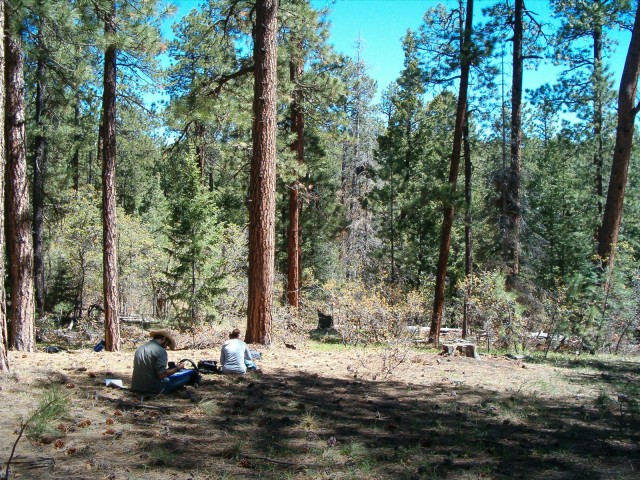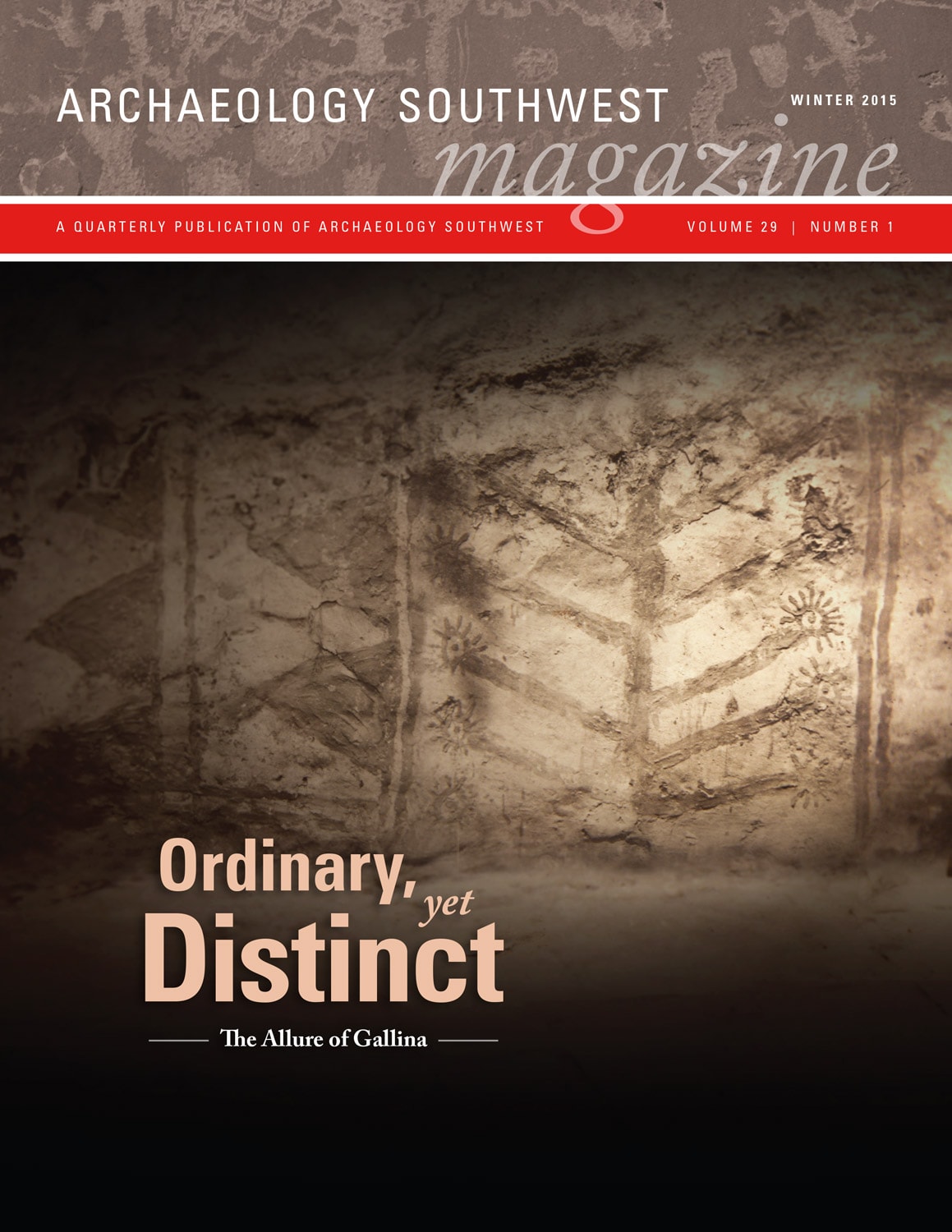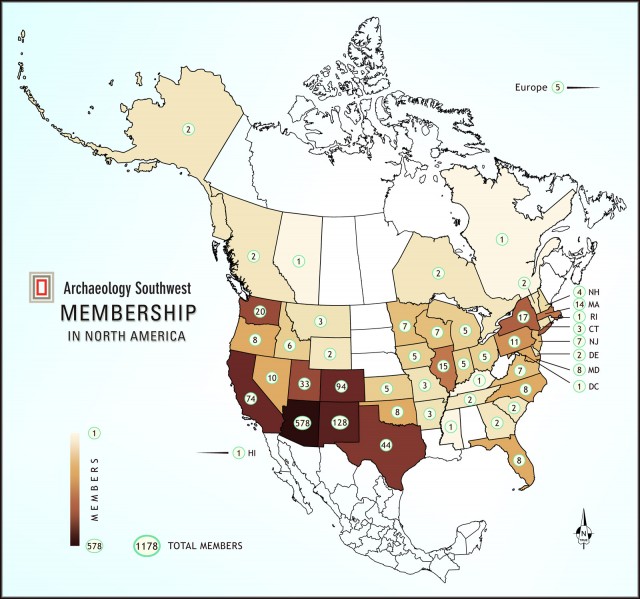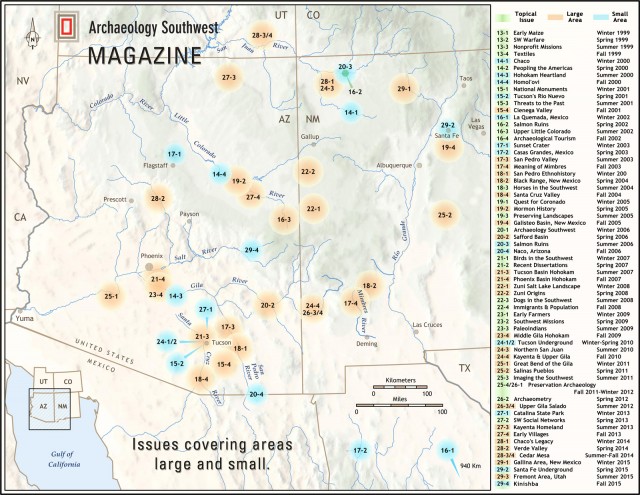Ordinary, yet Distinct
Archaeology Southwest Magazine Vol. 29, No. 1
Issue editors: Lewis Borck, University of Arizona School of Anthropology and Archaeology Southwest, and J. Michael Bremer, Santa Fe National Forest
The heartland of the Gallina region includes some of the least known and most rugged backcountry in northern New Mexico. From the early 1100s to the late 1200s, this forbidding landscape was home to a population of Ancestral Pueblo people. Although these inhabitants left dense and obvious evidence of settlement, archaeologists are still—even after almost a century of research—trying to understand the origin and demise of those populations, as well as changes that occurred over the nearly 200 years they lived in the region. Fortunately, there has been a revival of interest in the area since the 1980s, including a recent surge in research addressing many of the topics discussed in this issue.
Online exclusive essays (open as PDFs):
Gallina: Between Two Pueblo Worlds — Paul F. Reed
What Is a “No-Man’s Land”? — Lewis Borck
What Architecture Tells Us about a Society — Lewis Borck
Links of interest related to each article are listed below. A bibliography for this issue is available here (opens as a PDF).
Ordinary, yet Distinct: The Allure of Gallina — J. Michael Bremer
Frank Hibben
Edward Drinker Cope
Wheeler Survey
Timothy O’Sullivan’s Images from the Wheeler Survey at the Library of Congress
History of the U.S. Geological Survey
Santa Fe National Forest
What Is a “No-Man’s Land”? — Lewis Borck (online exclusive)
In Brief: Who or What Is Gallina? — Lewis Borck
Visualization: Upper San Juan Traditions — Lewis Borck, Erik Simpson, J. Michael Bremer, and Catherine Gilman
The Pecos Classification
The Pecos Classification in Archaeology Southwest Magazine Vol. 27, No. 3 (opens as a PDF)
An Introduction to Gallina Archaeology — Lewis Borck and J. Michael Bremer
For further reading (opens as a PDF)
Florence Hawley Ellis
Florence Hawley Ellis Museum of Anthropology at Ghost Ranch
Maxwell Museum of Anthropology, University of New Mexico
In Brief: Migration Routes and Violence — Lewis Borck
Gallina’s Enigmatic Towers — Adam Byrd
How Far Would You Go? Resource Selection in Dangerous Times — Connie Constan
What They Made and Used: Initial Clues to Gallina Identity — Jacqueline Marie Kocer
Cerro Pedernal
Maxwell Museum of Anthropology, University of New Mexico
Museum of Indian Arts & Cultures/Laboratory of Anthropology

Lewis Borck (left) and Alison Hostad documenting a Gallina pithouse on the Santa Fe National Forest. The remains of the structure are past Borck’s left shoulder, behind the tree. Courtesy of Santa Fe National Forest.
Household Activities in a Gallina Settlement — Paula A. Massouh
For further reading (opens as a PDF)
New Insights on Settlement and Mobility in the Gallina Heartland — Ronald H. Towner, Galen L. McCloskey, Benjamin A. Bellorado, and Rebecca R. Renteria
Laboratory of Tree-Ring Research, University of Arizona
In Brief: Herbert Dick’s Gallina Collection — Denver Burns
Origins of Gallina Identity — Erik Simpson
In Brief: The Rosa Roots of Gallina Farming — Benjamin A. Bellorado
Gallina: Between Two Pueblo Worlds — Paul F. Reed (online exclusive)
Gallina as a Social Movement — Lewis Borck
What Architecture Tells Us about a Society — Lewis Borck (online exclusive)
Appraising the Gallina-to-Jemez Migration Model — Michael L. Elliott
For further reading (opens as a PDF)
Pueblo of Jemez
History of the Pueblo of Jemez
Preservation Spotlight: Gallina Country — J. Michael Bremer
Santa Fe National Forest
Santa Fe National Forest Site Stewards
Back Sight — William H. Doelle
Subscribe



